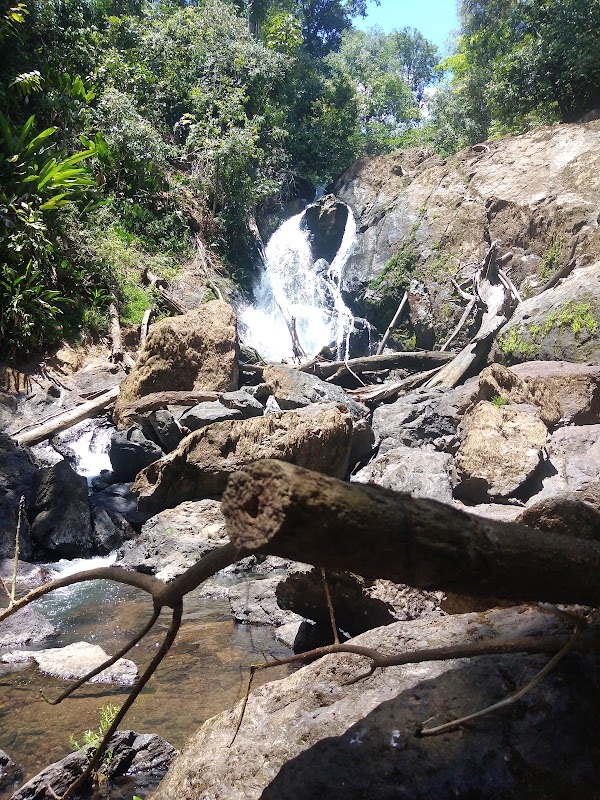Coastal Kayaking and Wildlife Adventures in Golfo Dulce Near Puerto Jiménez
Explore the vibrant marine life and coastal beauty of Golfo Dulce near Puerto Jiménez through exhilarating kayaking adventures. This guide offers practical tips and detailed insights to help you prepare and fully experience one of Costa Rica’s most dynamic waterfronts.
Start Early for Calm Waters
Morning tides bring gentler currents and better chances to spot marine life before the afternoon winds stir up the bay.
Hydrate and Protect from Sun
Carry at least 2 liters of water and use waterproof sunscreen to avoid dehydration and sunburn during your kayak tour.
Wear Proper Footwear
Choose water-resistant sandals or shoes with good grip to safely navigate rocky or sandy launch spots and shore trails.
Respect Wildlife Distance
Keep a respectful distance from animals and avoid loud noises to ensure natural behaviors continue undisturbed.
Coastal Kayaking and Wildlife Adventures in Golfo Dulce Near Puerto Jiménez
The Gulf of Dulce near Puerto Jiménez offers one of the most thrilling coastal kayaking experiences on Costa Rica’s Pacific side. Stretching beneath steep jungle-covered cliffs, the bay’s calm waters invite you to glide alongside playful dolphins, curious sea turtles, and flocks of vibrant shorebirds. This is an environment fiercely itself—the currents powering gentle waves that push your kayak steadily forward while schools of fish dart just beneath your paddle.
Launching from Puerto Jiménez, paddlers can explore mangrove-lined inlets and turquoise coves. The routes vary in length, but a common excursion covers about 6 to 10 kilometers over 2 to 4 hours, depending on tides and tides tug at your timing. The water stays warm year-round, but currents can grow stronger in the afternoon, so morning trips deliver calmer conditions and better wildlife spotting.
The shoreline is a stage for spotting howler monkeys swinging energetically in the trees, scarlet macaws erupting in color overhead, and monitor lizards basking on sun-dappled rocks. Sea turtles come close enough to silhouette beneath your craft, daring you to follow their path underwater. A long lens or waterproof camera will help seize these moments.
Preparation is key. Wear quick-dry clothing, secure water-resistant footwear, and carry sufficient water—a hydration pack works well. Sunscreen and a wide-brimmed hat protect against Golfo Dulce’s equatorial sun, which’s relentless even when the breeze softens. Guides from Puerto Jiménez offer valuable local knowledge, pointing out lesser-known quiet bays and the best wildlife windows while ensuring safety amid the bay’s capricious moods.
The terrain onshore includes easy trails leading to secluded beaches and lookouts offering sweeping views over the bay’s blue expanse. Combined with a kayaking tour, these add a refreshing variety to your adventure. The region is actively conserved, so keeping a respectful distance from wildlife and avoiding plastic waste matters.
Whether you’re a casual paddler or an experienced kayaker, Golfo Dulce delivers a tangible connection with nature’s ebb and flow. It’s not a route to conquer, but a place to meet the wildness on its own terms—with eyes sharp and paddle ready, housing both the thrill of discovery and a grounded respect for the marine life that rules this coastal realm.
Nearby Trips
All Adventures
Boat Charters
Water Activities
Adventures near Puerto Jiménez
Discover the unique and memorable adventures that make Puerto Jiménez special.
Frequently Asked Questions
Are guided kayak tours necessary or can I explore independently?
While independent paddling is possible for experienced kayakers, guided tours are recommended for safety, local knowledge, and improved wildlife spotting. Currents and tides shift, and guides know the quiet coves and optimal timing.
What types of wildlife can I expect to see from my kayak?
Dolphins and sea turtles are common visitors close to shore, along with mangrove birds, scarlet macaws, howler monkeys near river mouths, and marine life like angelfish and rays beneath the surface.
Is the water safe for swimming while kayaking?
Generally yes, Golfo Dulce’s warm waters are safe for swimming; however, be cautious of tidal changes and currents that can become unpredictable. Always consider local advice and avoid swimming alone.
What facilities are available in Puerto Jiménez before and after kayaking?
Puerto Jiménez offers multiple lodging options, gear rental shops, fresh food markets, and knowledgeable guides. Plan to stock up supplies and confirm kayak bookings here.
Are there specific conservation rules I should follow in Golfo Dulce?
Yes, avoid disturbing wildlife, do not litter, and stick to established boat-launch zones. Golfo Dulce is a protected area with ongoing conservation efforts, so responsible tourism is critical.
Can kayaking be combined with hiking near Puerto Jiménez?
Indeed, several short trails connect to secluded beaches accessible by kayak or foot, such as the Mono Titi Trail offering forest encounters and vantage points over the bay.
Recommended Gear
Lightweight Kayak Paddle
Efficient paddling demands a lightweight, durable paddle to reduce arm fatigue over sustained trips.
Water-Resistant Dry Bag
Keep personal items, snacks, and camera gear dry as waves lap and unexpected splashes occur.
Quick-Dry Clothing
Wear moisture-wicking layers to stay comfortable amid heat and occasional rains.
Wide-Brim Hat with Strap
Protect against sun exposure throughout the day, especially when water reflects UV rays intensely.
Local Insights
Hidden Gems
- "Quiet mangrove tunnels rarely traveled by big tours"
- "Secluded Playa Cativo away from daily visitor crowds"
- "Remote promontories with clear views of parrot flight paths"
Wildlife
- "Scarlet macaws"
- "Howler monkeys"
- "Sea turtles"
- "Bottle-nosed dolphins"
History
"The Golfo Dulce area has long been home to indigenous communities and was important for early fishing economies. Its designation as a marine protected area reflects a recent push to balance human needs with ecosystem preservation."

